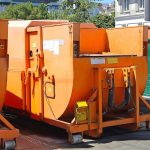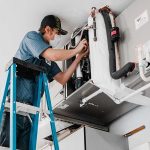You have probably heard the term flexible workspace numerous times – especially during and after the pandemic. This idea for revolutionizing offices has gained in popularity thanks to the lockdown, which encouraged remote and hybrid work and incentivized business owners and managers to introduce changes to the typical office layout. But, do you know what a flexible workspace indeed is? If not, read on – we will explain it here!
What is a flexible workspace?
A flexible workspace is an office designed with the needs of employees and the changing requirements of the business itself in mind. It consists of different types of spaces, many of which may be modified or rearranged to accommodate a particular number of employees or to serve a specific purpose.
What truly characterizes this type of workspace is open space, with hot seats. There are no cubicles or assigned desks – the employees can choose where to work on each day. This, combined with different types of spaces, serves the purpose of creating the most optimum workspace for every worker.
The kinds of spaces differ from one another – some are designed with collaboration in mind, others are meant to be quiet and let the employees focus on their work. Typically, in a flexible workspace, you can see several kinds of rooms:
- Collaborative spaces – Rooms where teams can meet and brainstorm together.
- Hot desks – Available as needed by individual employees.
- Sound-proof booths – Areas where the employees can make a call without worrying about the external noises.
- Equipment rooms – Special space with binders, printers, scanners, etc., designed so that the employees in open spaces would not be disturbed by the sounds generated by these devices.
- Breakout spaces – Places for more informal contacts, for visitors and for quick meetings.
Apart from the layout itself, a flexible workspace is also strongly connected with technology. Smart devices may be used both to gather data and use it to improve office planning further, as well as to increase the general comfort of the employees. This is also a way of cutting costs – with the electricity prices skyrocketing, intelligent devices capable of monitoring energy usage and leveraging it are the ideal solution for any organization.
What are the benefits of a flexible workspace?
We would not be discussing flexible workspaces, had it not been for a plethora of advantages that they come with:
- Scalability – With hybrid work model slowly dominating the labor market, companies need offices capable of accommodating all the employees, but not overly big, to reduce the costs. A flexible workspace is both – you can have a typical layout, and modify the species when the need arises.
- Cost-efficiency – The optimal space usage, along with controlled energy consumption, allows your company to reduce the costs significantly.
- Higher productivity – Every employee is different, but in a flexible workspace they will find the best space to work in. This way, the amount of work they do in the same time will increase, and you will enjoy better motivated, extremely productive employees.
The takeaway
A flexible workspace is a thing of the present, and the standard of the future. With rooms for different purposes and smart devices, you can take your company’s productivity to the next level, while reducing the overall costs and using your space to the maximum.







